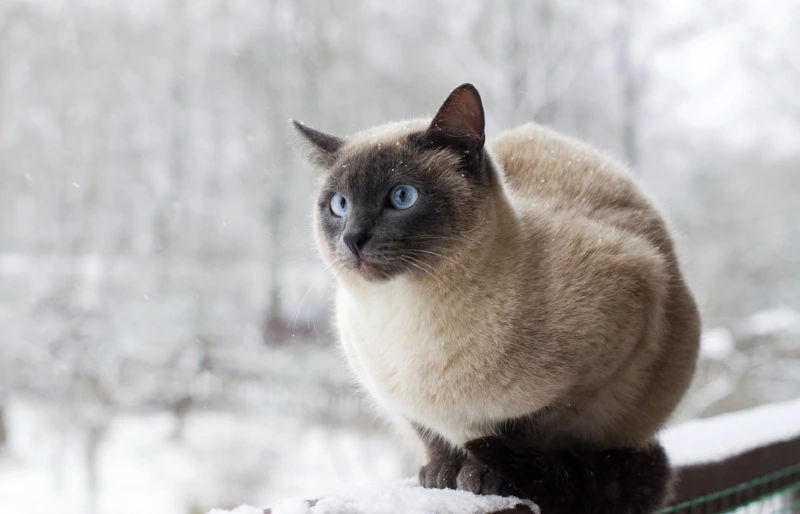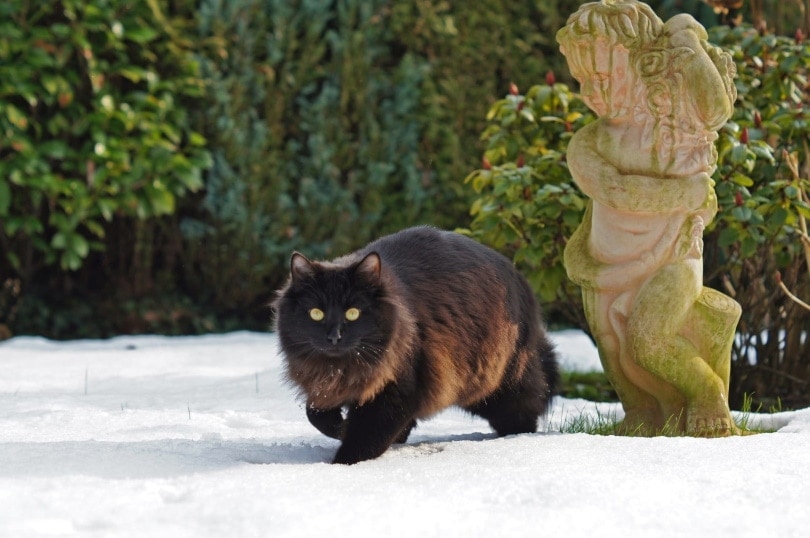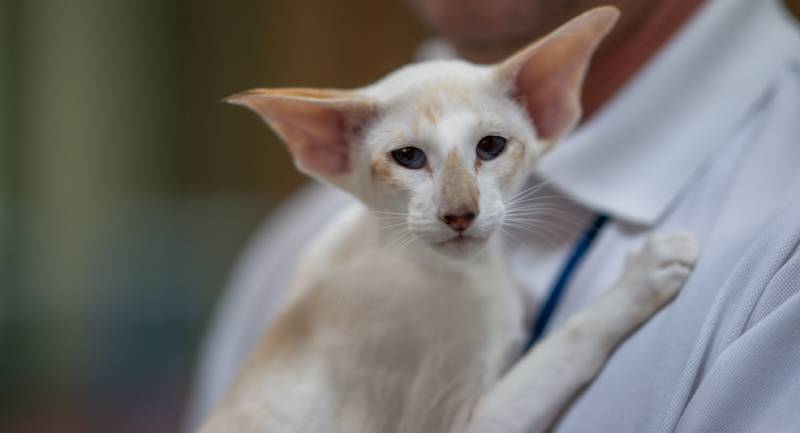Do Cats Need Sweaters in Winter? Vet-Approved Facts & FAQ
By Kit Copson
Updated on

Our role as cat parents is to provide a safe, warm environment for our feline friends, but do cats need a little extra help in winter by way of sweaters? In most cases, no: A cat’s natural coat is adapted to keep them warm in cold (but not extreme) temperatures, but there are a couple of cases in which a sweater may be beneficial.
Read on to find out more.
Should I Get a Winter Sweater for My Cat?
Most cats do not need sweaters in winter to stay warm: A cat’s fur provides thermal regulation on its own. When it gets cold, the strands of fur on a cat stand up—a process known as piloerection—which fluffs up the coat and contributes to keeping them nice and warm by adding an insulating layer of air between the skin and the outside world.
For this reason, putting a sweater on your cat could do more harm than good because it can hamper this natural insulation process and make them too hot. In serious cases, heatstroke can occur, which happens when a cat can’t cool down, and can be fatal if not treated.
What’s more, sweaters can be quite uncomfortable for cats and stress them out because it feels unnatural to them. In worst case scenarios, your cat could become tangled in their sweater, risking injury or choking. Taking all these factors into account, with the exception of special cases which we’ll detail below, cats don’t need to, and should not wear sweaters in winter.

In Which Circumstances Can a Cat Wear a Sweater?
Sphynx cats and other hairless breeds have a very fine layer of peach-fuzz hair, but this isn’t enough to keep the cold from affecting them in cold climates as it would cats with a full coat.
However, whether or not you manage to get a sweater on your hairless cat depends entirely on their tolerance for it. Some hairless cats don’t mind wearing sweaters at all, whereas others can’t stand it. Soft fleece or cotton sweaters made of fabric that isn’t rough or scratchy are a good option. If your hairless cat will not tolerate a sweater,, don’t worry—there are plenty of other ways to keep hairless cats warm in winter.
Another instance in which wearing a sweater may be necessary is if your vet recommends it after surgery, spaying, or neutering. In some cases, this can help prevent cats from pulling on their stitches but ask your vet’s advice first, as it’s not always a good idea.
How to Keep Cats Warm in Winter
Cats gravitate toward warm spots in winter, and you can keep your cat cozy by providing plenty of these at home.
- Keep cats indoors. Temperatures lower than 45 degrees Fahrenheit are too cold for cats, so avoid letting them outside to keep frostbite and hypothermia at bay.
- Make sure your cat has a cozy bed, blanket, or towel to snooze on, away from drafts.
- Provide cozy hiding spots like enclosed/covered cat beds or cat condos.
- Consider a heated bed for hairless cats, but make sure it’s not too hot as this can burn their skin.
- If you go out, leave the heating on at the usual temperature for your cat.
- Keep your home draft-free.
- If you have radiators in your home, consider buying a radiator bed to give them somewhere toasty to watch the world from.
- Provide plenty of cuddles if this is something your cat enjoys.
Final Thoughts
Sweaters are not usually necessary for cats in winter unless you have a hairless cat, or your vet has advised it for medical reasons. Even if your cat is hairless, if they don’t like wearing sweaters, you can help them keep warm by making sure they stay indoors and have access to plenty of cozy spots to curl up in.
Featured Image Credit: Rodica Vasiliev, Shutterstock











